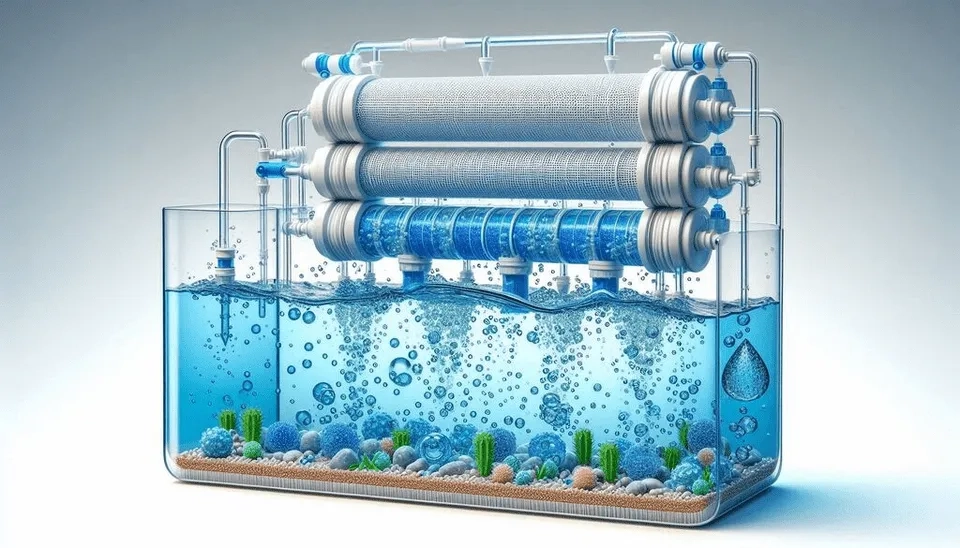
In numerous nations where water supplies are limited, fulfilling the demand for pure water poses a formidable challenge. Access to clean water is crucial not only for individuals but also for various industries such as agriculture, energy production, tourism, recreation, construction, and more. Furthermore, with the ongoing process of global urbanization, the annual water consumption rate continues to rise, resulting in increased pollution levels and rendering water unsuitable for direct human consumption. To address these fundamental needs for clean water across all sectors of society, it becomes imperative to prioritize the production of safe drinking water and water for other purposes. (Zubair et al. 2023).
The main method of obtaining clean water from a range of sources is thought to be water desalination. Desalination is the procedure used to purify seawater or brackish water of salts and other impurities so that it is fit for human consumption as well as industrial and household use. Strict government requirements on drinkable water quality have forced advancements in water desalination plants and an increase in their productivity. Reverse osmosis (RO) is now the most reliable state-of-the-art method for desalinating seawater and brackish water, and it has been employed as an alternate source of clean water production to reduce the expenses involved with desalination (Qasim et al. 2019).
Due to the widespread use of RO for water and wastewater treatment and its popularity, we all frequently hear about it these days. What is RO? What is the background of RO? Is it environmentally friendly or destructive? And how does it apply to our daily lives? are the inquiries to which this article provides answers.
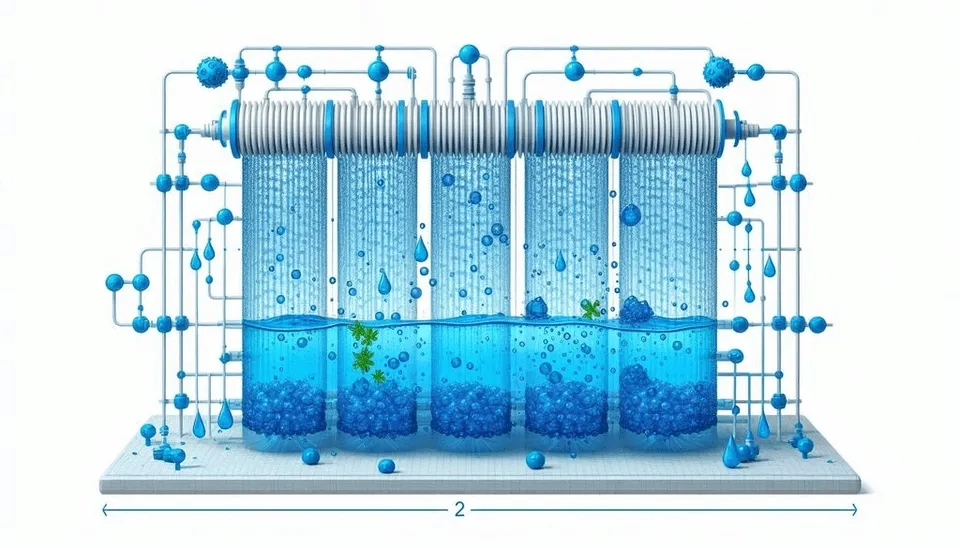
1. RO Principles
Due to advancements in membrane technology and high energy efficiency, membrane-based desalination techniques are now considered to be the most promising and useful solutions. For the treatment of brackish and seawater from various sources, there are several different types of membrane-based techniques have been used. One of these techniques that is most frequently employed is RO. Therefore, we are attempting to explain what RO is and how it functions.
1.1. Osmosis Process
Osmosis is a natural phenomenon that results when a semipermeable membrane separates two liquids. When the concentration of the two liquids changes, the liquid will begin to flow across the membrane from the lower concentration to the higher concentration until equilibrium is reached. There won't be any flow, though, if there is no change in concentration between the two sides. The liquid begins to flow from the higher concentration to the lower concentration when an external pressure is applied that is greater than the osmotic pressure of the highly concentrated liquid (Ibrahim et al. 2020).
1.2. Reverse Osmosis Process
As implied by its name, Reverse Osmosis (RO) is a method of separation in which pressure is applied to a solution to drive the solvent through a semipermeable membrane from one area of low concentration to another, leaving the solutes behind. Freshwater and other tiny solution components can get through the membrane, while bigger molecules like salts and other contaminants cannot. Therefore, RO is fundamentally a pressure-driven membrane diffusion process (Britannica. 2023).
A water pump must apply pressure to a saline solution or wastewater in order to create RO pressure. The solvent will not flow when the pressure is equal to the solution's natural osmotic pressure. The solvent flows from the diluted solution to the concentrated solution if the pressure is less than the natural osmotic pressure of the solution. If not, the solvent will flow through the reverse osmosis membrane, creating a diluted solution on the pressure side and a more concentrated solution on the opposite side. All of these will successfully separate the solute and eliminate contaminants such as salt, colloid, microorganisms, heat source, organic debris, and others. In other words, the principle of desalination by using a RO membrane is to apply more pressure than natural osmosis pressure in water with salt (Jiang et al. 2018).
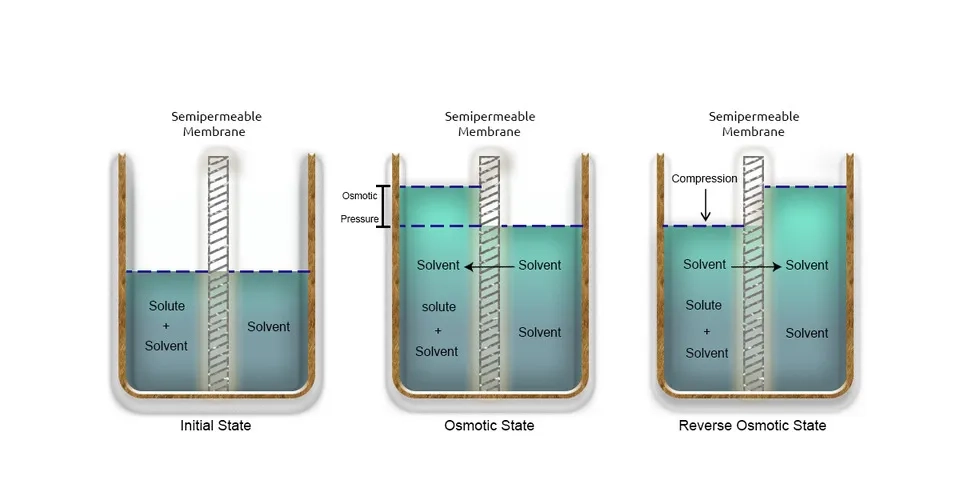
2. RO Short History
The birth of pressure-driven membrane desalination took place nearly 100 years ago. Seawater distillation plants were first developed in the 1950s and in the 1960s. Membranes then began to enter the desalination market, and the first successful RO plants used brackish water as feed in the late 1960s. In the following decade, membrane material improvements increased product permeability, and RO membranes were then applied to seawater desalination. Over the past 40 years, dramatic improvements in RO membrane technology elevated RO to be the primary choice for new desalination facilities (Greenlee et al. 2009).
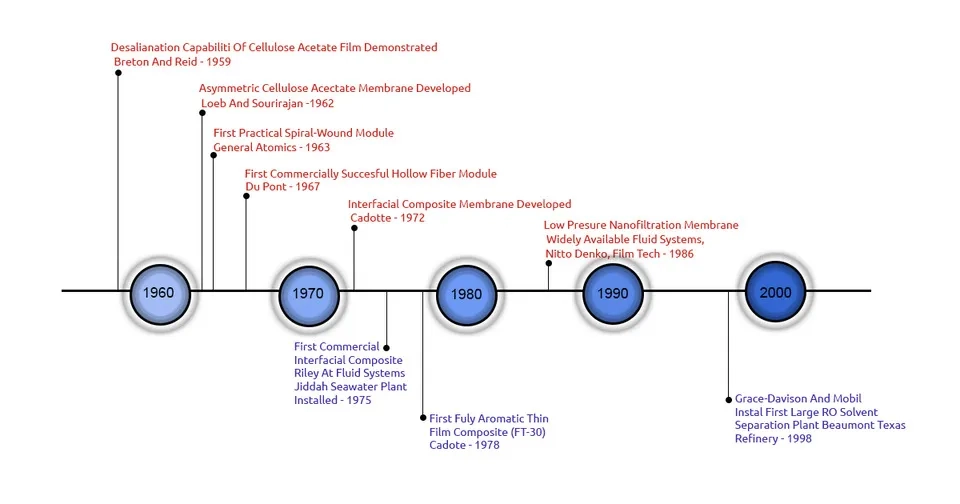
It is interesting to learn that the term "reverse osmosis" has an unclear beginning. According to Gluter, Gerald Hassler should receive credit for coining the phrase first used in an August 1956 UCLA Engineering Report. But Gluter said, "It is also noteworthy that RO was referenced in the Office of Saline Water R&D Progress Report from the Florida study team dated April 1957. Since each study group operated separately, the term's original usage is still not entirely apparent (Glater 1998).
3. RO Applications
Today, RO systems are used in a variety of establishments, including kitchens, hospitals, refineries, power plants, the pulp and paper industry, etc. Particularly in the dairy, galvanic, and food industries, RO is employed as a concentration step. Improvements to RO technology in the areas of membrane composition, module and process layout, pre-treatment, and energy recovery have reduced costs, which has increased interest in its commercial uses. RO is now a dominant technique for desalinating brackish and seawater and is utilized in a variety of applications for purification and concentration (Wenten et al. 2016).
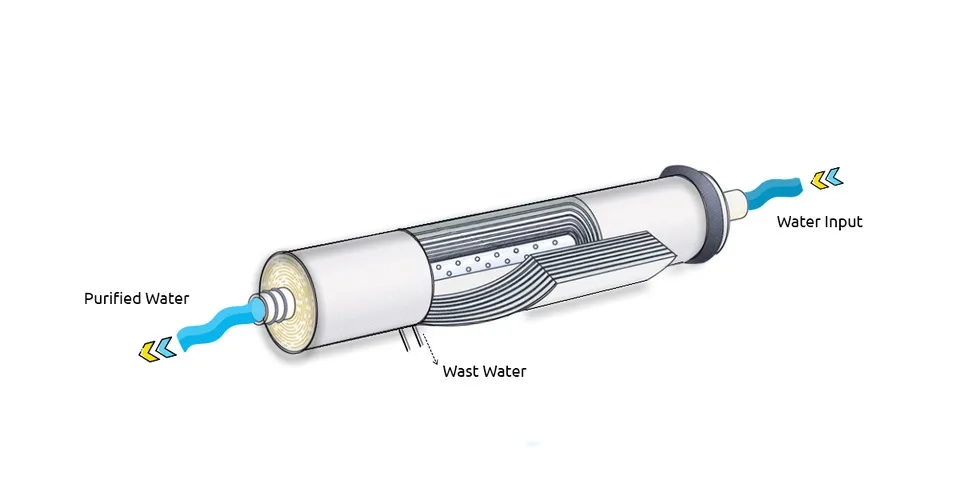
3.1. RO Application in Water & Wastewater
RO has a number of uses as a water treatment method such as desalination and peat treatment and as a municipal and industrial wastewater treatment method. Nowadays, RO is used in the desalination of various water sources to produce potable water, process water and demineralized water. The production of drinking water from seawater and brackish water is currently the greatest application of RO.
3.2. RO plants
RO plants are where the procedure is carried out. In pressure-driven membrane-based plants, semipermeable membranes are used to purify water by allowing water molecules to flow through the membrane while rejecting salts. Commercial and domestic RO plants are the two main categories of RO plants. The domestic RO plant is for the production of a modest volume of filtered water, such as for household uses (example: tankless Ro water filters), whereas the commercial RO plant is for large-scale applications like factories. Although no two RO plants are alike in appearance, they all operate on the same principles, and all of the common plant types on the market contain pressure vessels.
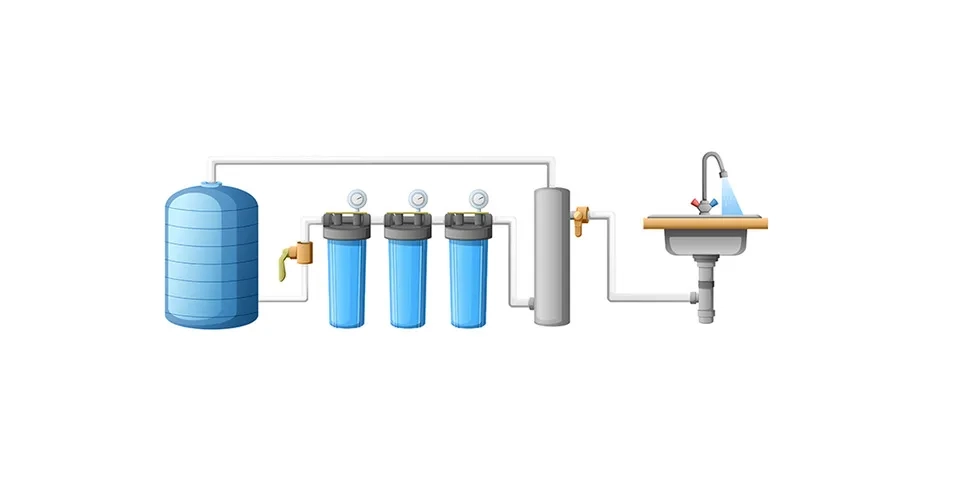
4. Pros & Cons of RO
Reverse osmosis membrane technology is the most advanced and energy-saving separation technology compared to conventional methods. It is a physical method that has benefits such as reduced space requirements, compactness of the plant and processes, ease of process automation, and operational simplicity. However, scaling and fouling problems increase energy consumption and limit permeate flux at high salt concentrations. In addition, the utilization of electric power and reverse salt flux are some disadvantages of RO (Yaghub et al. 2022; Jiang et al. 2018; Zubair et al. 2023).
Advantages | Disadvantages |
Treating > 70,000 ppm | Internal Concentration Polarization |
Energy | Reverse Salt Flux |
Reversible Fouling | Choosing the right Draw Solution |
Chemical | Choosing the right Membrane |
Rejection of Boron and TrOCs | —--------- |
Fig. RO Advantages & Disadvantages
5. Conclusion
Simply answer, "What is RO?" RO is fundamentally a pressure-based membrane diffusion process that could purify water and wastewater or be used for concentration in the food industry. To use RO for water treatment, RO plants have been developed for industries and households. While there are several advantages to using the RO, some difficult issues remain unresolved.
While the advantages of RO are abundant, it is important to acknowledge that challenges persist on this transformative journey. Complex issues such as scaling, fouling, and high energy consumption demand continuous exploration and innovation. Yet, the resilience of researchers, engineers, and industry leaders paves the way for advancements and breakthroughs.
As we navigate the evolving landscape of water treatment, the potential of RO remains unparalleled. By addressing the unresolved challenges, we can unlock new possibilities and ensure a sustainable future where access to clean water is a reality for all.
